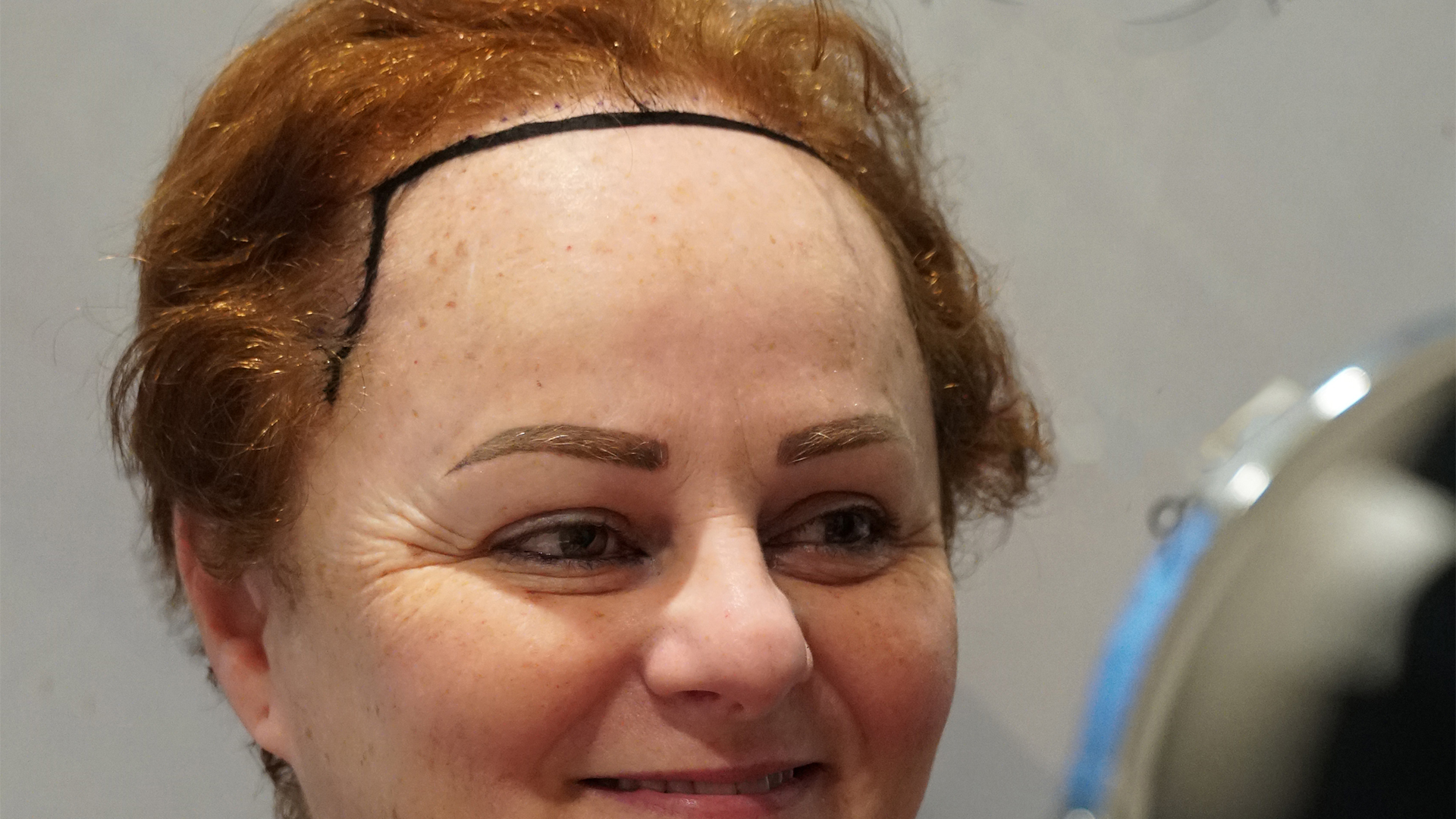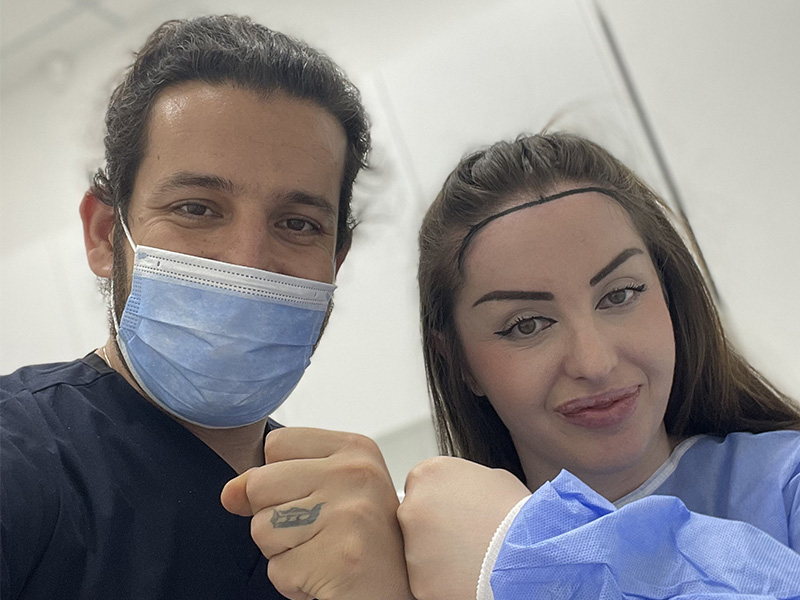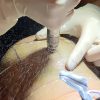Contents
Hair Transplant in Women
Hair transplant in women, as in men, is a method that is frequently used in cases of hair loss due to genetic causes or after trauma. Unlike male type hair loss, some tests are applied before the operation because the hormonal system in women can change from time to time.
The purpose of these tests is to determine if the leak problem is due to a temporary reason or if it is a permanent drop. If there is permanent hair loss, a hair transplant can be planned taking into account the person’s pregnancy and menstruation status.
Is Hair Transplant Performed in Women?
Contrary to popular belief, the problem of hair loss in women is a common problem, especially in recent years, just like in men. Female type hair loss is different from male type hair loss. The fall may depend on the person’s genetic map or may have occurred after an accident or trauma.
The important point is to determine the cause of the fall. If there is an ongoing health problem, a hair transplant operation that is performed without resolving the problem may not provide successful results, especially in women. We can summarize the difficult situations to obtain a successful result as follows;
- Hormonal changes,
- Vitamin or mineral deficiency
- Medications used,
- Side effect of continuous treatment,
- Excessive use of cosmetics.
- Excessive capillary applications,
- Skin diseases,
- Cyclic changes.
After determining the main cause, if the fall is due to a variable, treatment should first be planned according to the variable that caused the fall. As long as the condition causing the fall continues, the success rate in hair transplant planning will be low.
If the fall is due to genetic reasons or after trauma and if there is a permanent situation, hair transplant can be easily performed on women and a high success rate can be achieved.
What are the necessary tests before Hair Transplant in women?
Female-type hair loss occurs in a different structure than male-type hair loss. Since women have a more variable hormonal structure than men, there are a series of tests that must be carried out before the operation. They are;
- Hemogram test (whole blood)
- T3, T4, TSH level tests
- Iron and ferritin tests (iron binding)
- Thyroid Ultrasound
- Other gynecological hormonal tests
- Zinc level,
- Testosterone level test
Also, if there is a planned pregnancy to the extent of the operation, the hair transplant operation should be reconsidered.
Analysis of hair loss in women
The scale that is generally taken as the basis for mapping male pattern hair loss is the ‘worldwide hamilton-norwood scale’. This scale, which is prepared for male-type hair loss, does not give accurate results in women.
If there are no bald spots after the trauma, the scale that can be taken as a basis for female-type hair loss is the ‘Ludwig Classification’. Ludwig divides the fall of the female type into 3 parts;
- Type 1: Although the front line is preserved, there is a slight depopulation.
- Type 2: Although the front line is preserved, the fall is at a moderate level and is irritating.
- Type 3: the front line is missing. The fall is advanced.

How do you do a planning of the front line in women?
There are three different situations in female hair transplant operations. Are;
- The problem of falling has occurred regionally due to trauma,
- There is the fall of female type,
- Due to the width of the forehead, you want to lower the front line.
Except for the first option, in other loss situations, a new front line is needed if the falls have passed the stage of light depopulation of the area. When determining the female frontal hairline, unlike the male frontal hairline, it is not the frontal hairline that goes up and then down that creates a natural look, but it is the shape of the hair that continues straight and goes down without lifting back. Since the first line is in the profile and will directly affect the social life of the person, it is one of the issues to consider.

How is a Hair Transplant performed in women?
As with male-type hair loss, the patient’s transplant viability is first checked. For women, additional tests such as hormonal status, pregnancy, cycle, vitamin deficiency should be applied. If the person does not have an obstacle to hair transplant, the operation can be planned.
Hair transplant operations in women are performed to feel better socially, just like in men. Since hair transplant is a cosmetic operation, you should feel good from the beginning to the end of the process. If there is a general depopulation in male type hair loss, the operation is performed by shaving the hair.
The purpose of this is to better see the situation of the falls and create an effective working area. A partial shave is usually done because women’s haircuts will create a social nuisance.
Although the shape of the cut differs depending on the falls, cutting the hair completely is the last option in hair transplantfor women. Here, the first parameter is the fall map. Unlike male-type falls, the female fall map will not change, so planning is generally based on the existing situation.
If there is a general fall that has spread over a large area, it may be necessary to cut the hair to increase the use of the donor area.
If the fall has not spread in a general area, if the planning will be done only in the frontal line or if the fall has occurred locally due to trauma, 1 or 2 windows are opened in the donor area, of 1 finger wide, depending on the size of the receiving area. When women are generally supposed to have long hair, the opening windows can easily be camouflaged by styling the hair. There is no change in the person’s social life. Daily life can be continued in the same way.
Hair Transplant Techniques in women
Hair transplant techniques used in women;
- Technique Fue Zafiro
- DHI choi-pen technique
The objective of the two techniques used is to transfer the follicles collected from the donor area with the FUE method to the necessary areas in the healthiest way. The choice of the technique to be used for the transplant is determined based on the existing situation and the planning to be carried out. To briefly explain it can be said that;
If the person’s hair loss is seen in the first line or regionally, the Sapphire FUE technique can be applied. In this technique, a more natural appearance can be obtained by giving directions to the channel more effectively, since the hand is never separated from the transplant area during the opening phase of the channel (preparation of the places where the grafts will be placed), where the density of the hair and its directions are determined.
At this stage, sapphire tips are used today, while steel blades were used in the past. Sapphire is the most compatible material with human tissue. In this way, the tissue recovery time is very short and since smooth channels will be opened due to the structure of the sapphire, the graft-tissue integration is fully realized. There is no redness, scarring, or an unnatural appearance to the tissue.
If the area to be planned is not a local area, if the fall extends over a wide area, and if planning is to be done between existing hairs, the DHI choi-pen technique will be more suitable. The tips used in the DHI hair transplant technique are piercing, not cutting like those of the sapphire hair transplant.
In this way, when planning a study between existing follicles to obtain a denser appearance, these existing follicles can be effectively protected. Thanks to special pens called implanter choi-pen, the need to open channels is eliminated.
With these pens, the channel and transfer phase is done at the same time. This is one of the factors that increase the comfort of the person when performing a hair transplant in women.
No Shave Hair Transplant for Women
Aesthetic operations are operations planned to make people feel better. An unshaven planning, with the assumption that women usually have long hair, greatly increases the comfort of the hair transplant operation for them. With the hair style changes to be made, the person adapts to their daily life in no time.
As genetic reasons are dominant in male type hair loss, the problem of falling out can continue over time. For this reason, hair transplant is usually planned by shaving the hair. Unshaven hair transplant operations in men are below 1% overall.
After shaving, as a larger donor area will be obtained, high numbers of grafts can be achieved and the area where the falls were seen will be better analyzed, in fact the operation can be planned in these areas to avoid future undesirable views that may disturb the person.
For women, the situation is different. The continuation of genetic falls is very limited, the planning is done according to the existing situation, and the transplant without shaving is usually planned for a faster return to social life. In this way, the person has a more comfortable process.
Can hair be dyed after Hair Transplant in Women?
First of all, the hair must be in its natural state when arriving at the operation, and no type of fixative must be used. If the person has white or very light hair, the hair should be dyed a dark color the day before. This will increase the success of the operation.
After the operation, no hair treatment or cosmetic use is recommended for the first 6 months. Depending on the person’s postoperative period, dye can be applied from the 6th month.
Contraction of the forehead in women with Hair Transplant
Hair transplant is the only treatment method that can be applied to people who do not have hair loss problems and who have a wide forehead due to their genetic structure, in order to achieve a more aesthetic appearance. The application is performed under local anesthesia.
Since painless anesthesia will be used during anesthesia, the person does not feel any pain that is uncomfortable. An area 1 finger wide is shaved between the existing hairs (1 or 2 depending on need) at the nape of the neck, in the donor area, and a certain number of grafts are extracted using the FUE technique. After extraction, the existing hair provides camouflage in the shaved area.
The forehead area is not shaved so as not to spoil the aesthetic appearance. The extracted roots are transferred to the recipient area starting from the frontal line designed with the patient according to their facial composition.
In the transfer phase, two transplant techniques are usually used together. While the sapphire hair transplant is applied to the bald area due to the fact that the directions of the hair can be given more naturally, the DHI technique is applied to protect the existing hair as much as possible so that there is no gap between the original hair and the transferred hair. The Sapphire technique and the DHI technique are used together in the same operation. In this way, the most effective result is obtained.
Age Range of Hair Transplant in Women
Although female-type alopecia is not permanent, unlike male-type alopecia, transplant is not recommended for very young or very old people due to the high risk of making wrong decisions at very early and later ages. The most important stage in hair transplant for women is the planning stage. The consequences of making a wrong decision during the planning phase or doing the wrong planning can cause serious problems.
Is Hair Transplant Difficult for Women?
Contrary to popular belief, hair transplant in women is easier than in men. Although it varies according to the map of male-type falls, a high number of grafts is generally needed. On the other hand, in female-type falls, the falls will genetically occur in smaller areas, so a high number of grafts is not needed, and this directly affects the duration of the operation.
Furthermore, with the developing technology, the convenience of hair transplant operations has increased and the social and psychological pressure experienced before the operation has been totally eliminated.
How successful is Hair Transplant in Women?
The most important point for a successful operation in women is to find the cause of the falls. If the operation is planned based on the genetic map of hair or a post-traumatic bald spot, very successful results can be obtained, while if a hair loss problem occurs for a variable reason, the success rate may decrease. For this reason, the reason for the fall must be found, a treatment protocol must first be followed for this reason, and then a hair transplant planning must be done if there is a permanent fall/thinning.
Things to consider before Hair Transplant in Women
Generally, people have concerns about the difficulty of the operation and the difficulties of the postoperative process before performing it. With today’s most current technologies, the social, physical, and psychological pressures experienced by men and women with hair loss are less prevalent preoperatively than ever before. Topics to consider before hair transplant in women can be listed as;
- The feasibility of the patient’s operation must be checked.
- If there is continuous treatment, the doctor who will perform the operation must be informed.
- If the person has allergic structures, the doctor who is going to perform the operation should be informed.
- No fixative should be applied to the hair before the operation.
- If you smoke, it should be restricted or stopped completely if possible.
- Alcohol consumption should be restricted 10 days before.
- Drinks with anticoagulant effects (such as coffee, green tea) should be avoided 1 week before.
- You must have breakfast and come to the operation rested.
Things to consider after Hair Transplant in Women
- After the operation, the patient must be in contact with the doctor and must follow his recommendations.
- The implanted area must be protected against friction and knocks for 10 days.
- Drinks with anticoagulant effects such as green tea and coffee should be avoided for 1 week.
- Maximum attention should be paid to daily washing.
- Smoking should be reduced if it exists or quit completely if possible.
- Alcohol consumption should be restricted, especially in the first 10 days.
Hair Transplant Results in Women / Before and After
Hair Transplant Prices 2022 in Women
The price of the operation varies according to the date of the operation, the preferred package and the planning to be carried out. You can get detailed information about current hair transplant prices for women here.
















